Project Overview
The TAMU Rec Sports App Redesigned was a course project The timeline was Jan 23 - April 18, 2024. I worked with a team of peers to design a Gamified User Experience, Interactive Flows, and Location-based information system to improve the existing A&M Recreation Sports App. We used Notion pages to illustrate the development process and conducted audience analysis through Natural Observation, Survey Results, and User Personas.
Problem Statement: Gym users need access to information on fitness class availabilities/schedules/options because the information is not available online and they are frustrated about an inconvenient sign-up process.
My Role
UI/UX Designer
Credits
UI/UX: Tilly S., Addison T., Kate C.
1. User Identification / Problem Statement
Audience Selection
Our ideation process for the target audience involved each team member proposing ideas followed by a vote. Each member of the group had a set number of votes to “spend” on different ideas. Our final decision was to focus on users of TAMU recreational centers.
Problem Statement
Gym users need access to information on fitness class availabilities/schedules/options because the information is not available online and they are frustrated about an inconvenient sign-up process.
Research: Observation
Most common pain points: Gym feels crowded and machines/equipment is often unavailable. Spaces are uncomfortable. Many people who have the rec app want a better interface and desire for a newly developed app / unfamiliar with the rec app. Hard to know which sections of the gym are pre-booked or not. Small courts were either filled or completely empty
Different observed groups: TAMU undergrads/grads
User Personas
User personas were generating by presenting ChatGPT with a request to generate a user, labeling the user with numbers from 1 to 10 describing different personality traits relevant to our persona research. For example, a persona might be an 8 on the introvert to extrovert scale and a 6 on the busy to time-rich scale. To provide variety between our personas, we created some personas who attend the gym frequently and some who attend inconsistently.
3. Prototyping
Version 1: Sign-in process, Fitness class registration system, Instructions on how to use different machines
Features: Progress tracker, goal setting, competitive interactions
Version 2: In the first prototype rendition, each group member created their own app wireframe and received user feedback that we later combined into one master prototype that included the user’s favorite features. We included Population Gym Availability, speedy gym scan-in, and user statistics (ex. calories, etc.).
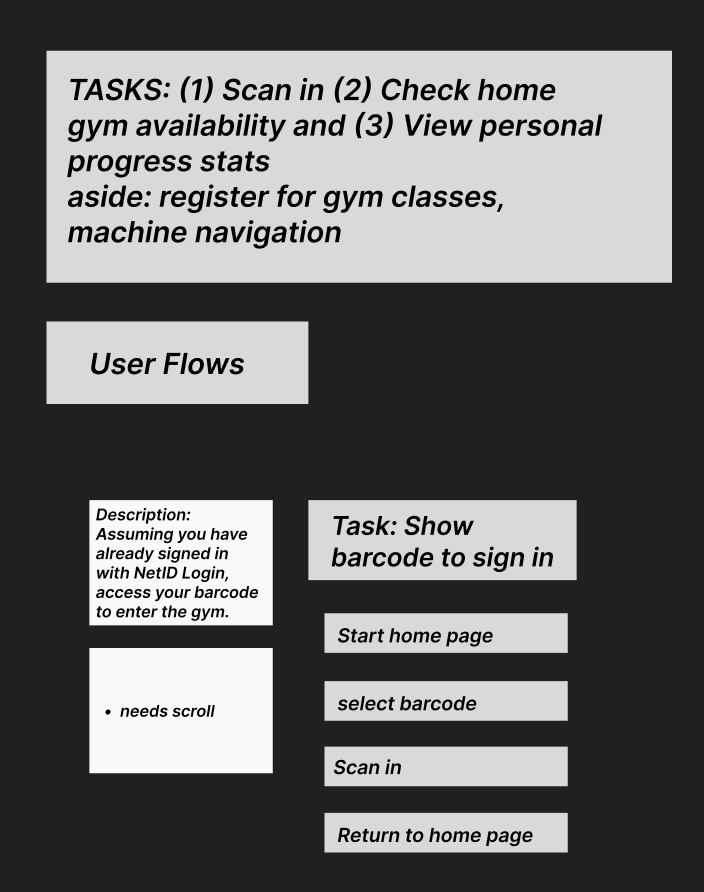
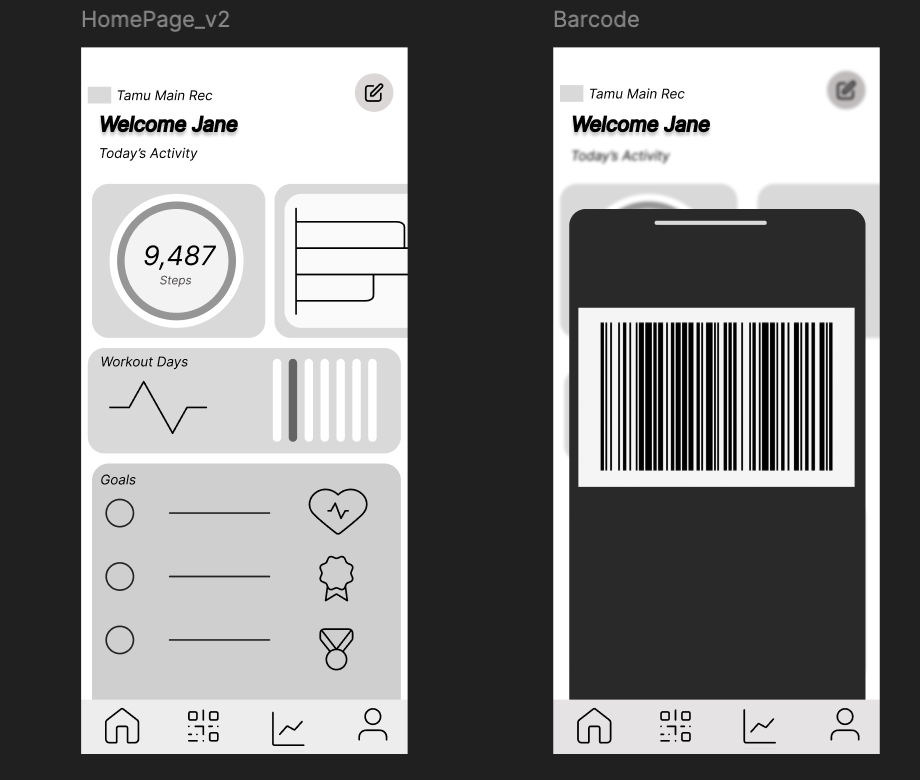
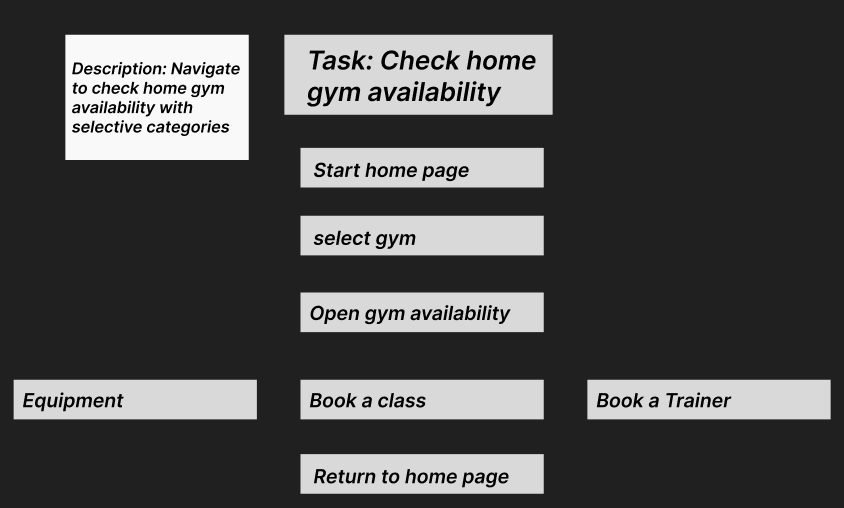
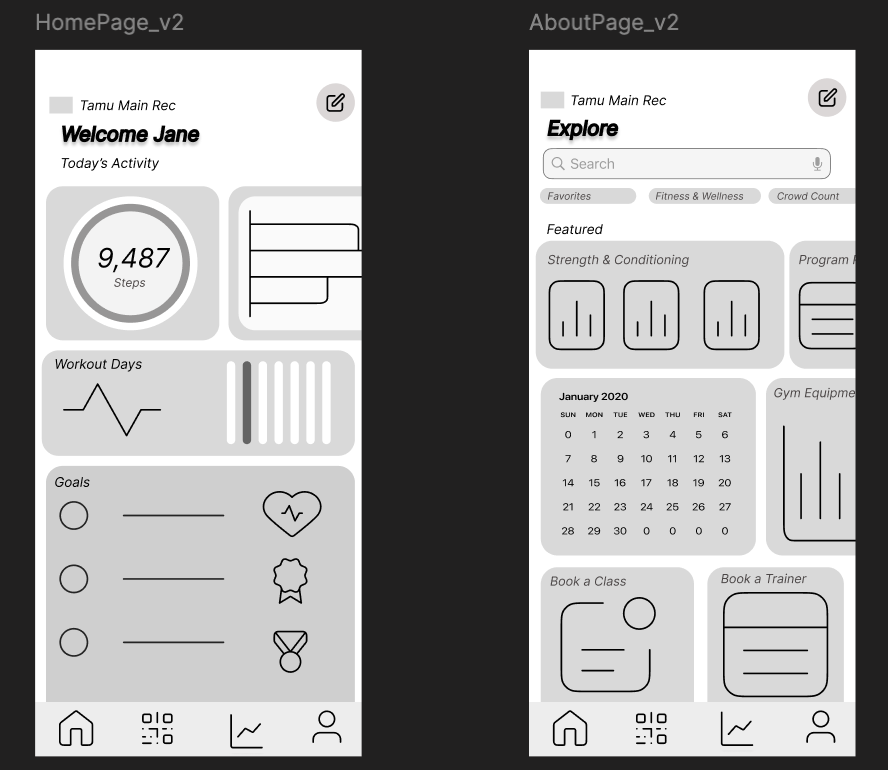
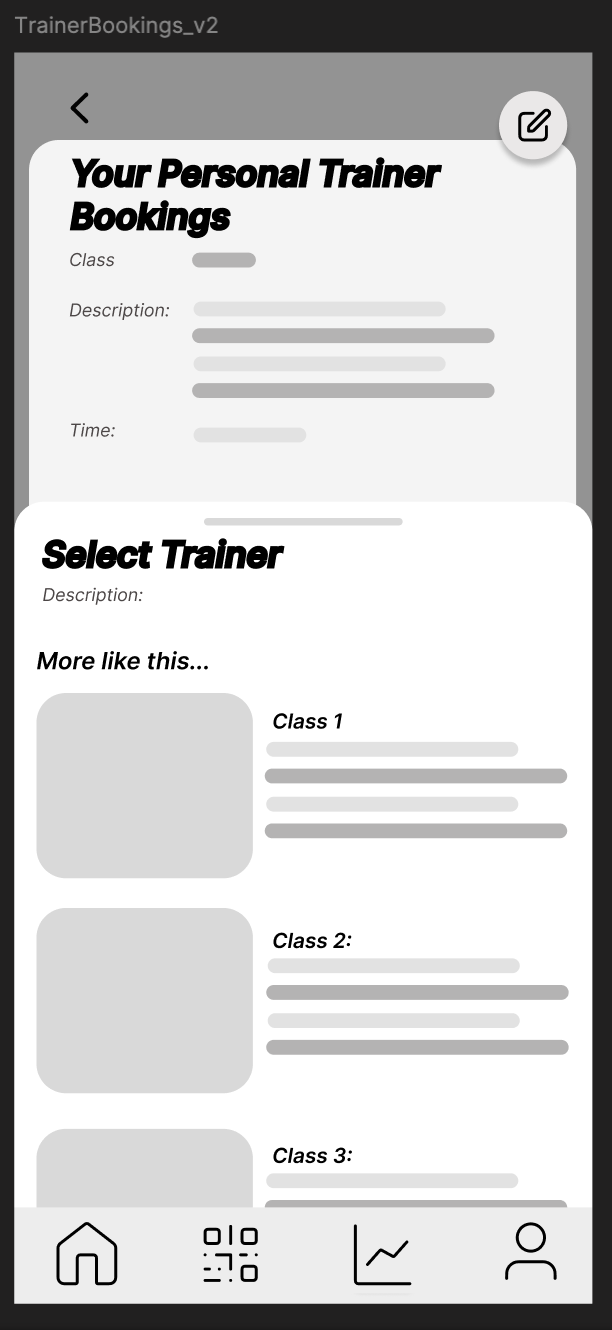



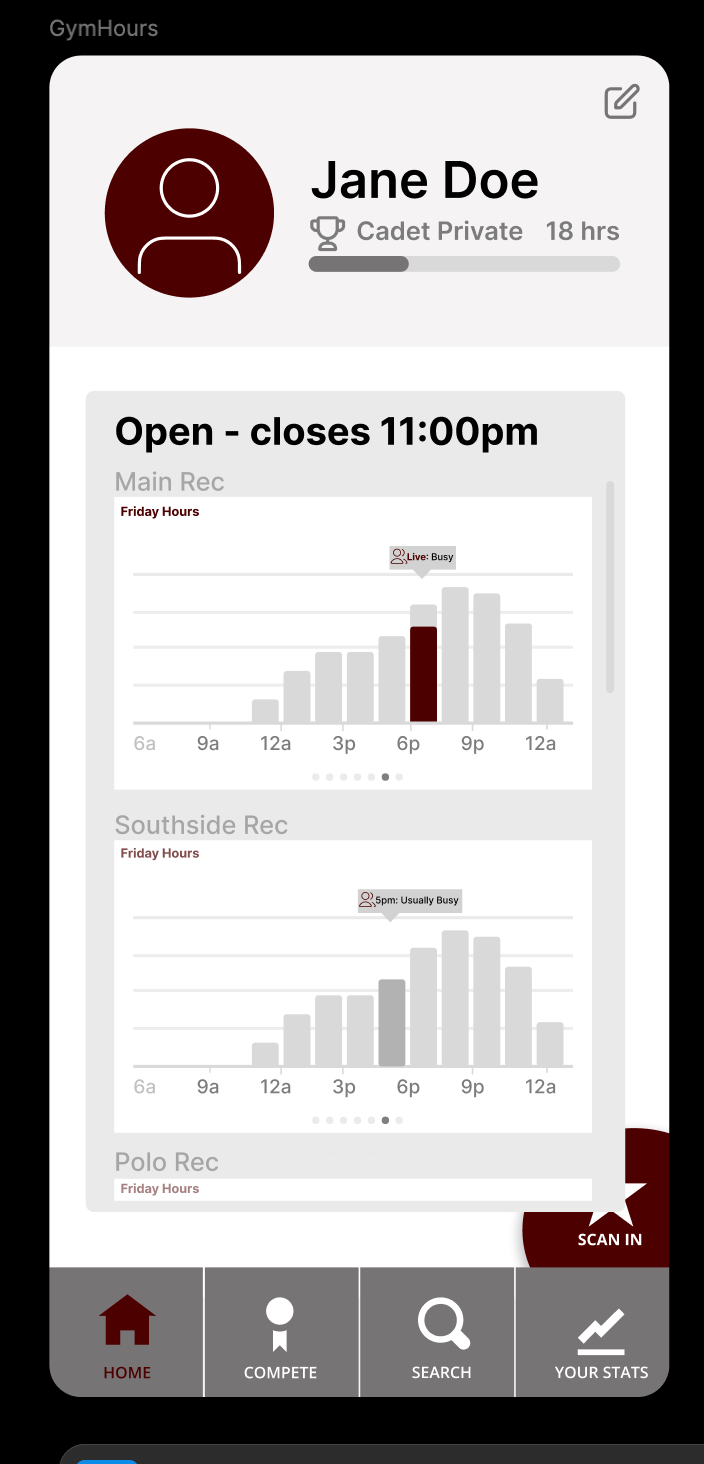
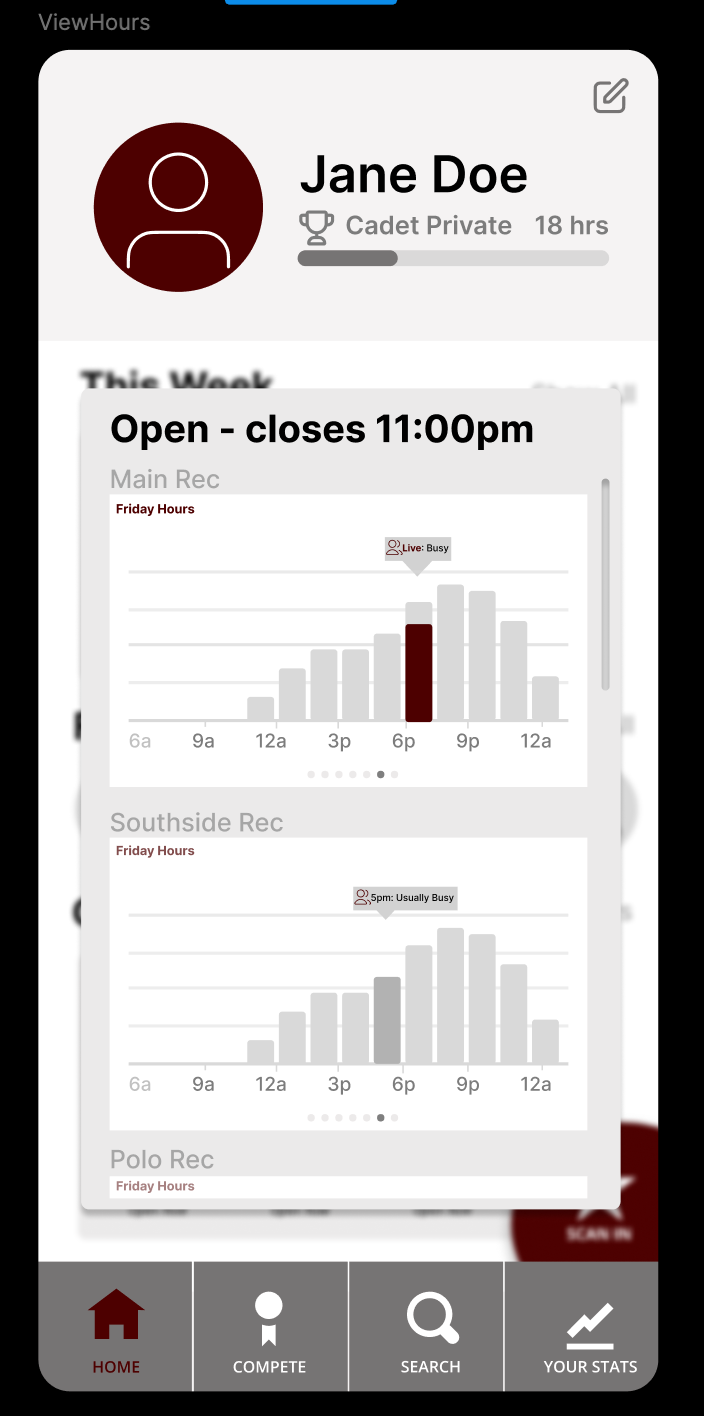
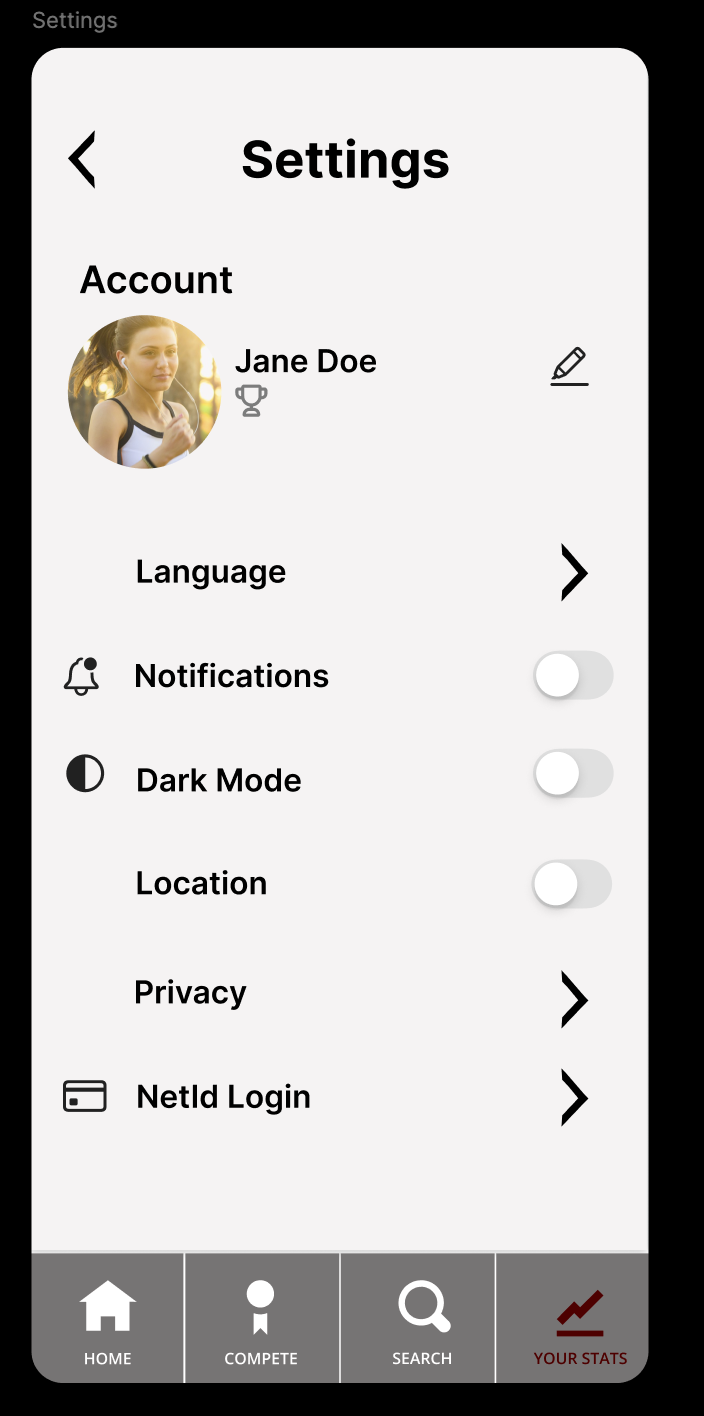
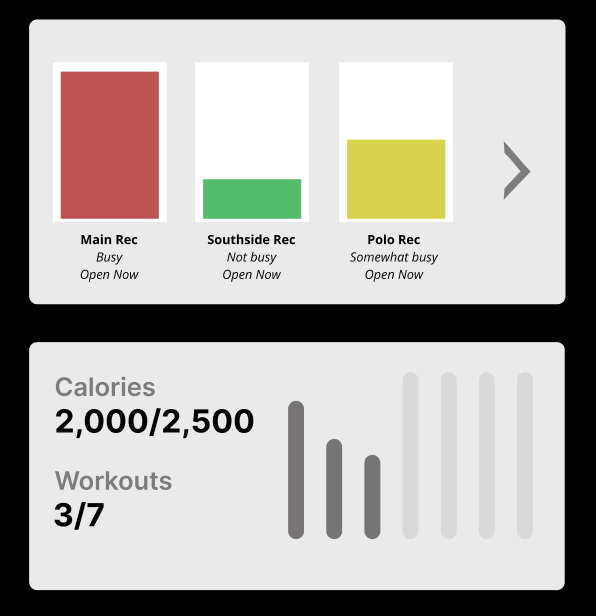
4. Final Product
Our final product is the accumulation of our three main ideas: accessibility, aesthetics, and gamification. Our app, JAKT, centers around making the TAMU Recreational Center App a pleasant experience that not only allows for quick accessibility of information but encourages the user to go to the gym through features that connect the user to the larger TAMU gym-going community. These features include Friends and Groups as well as clearly-presented event information. The user can choose to partake competitively as he or she meets goals and ascends in the leaderboard and ranking system.